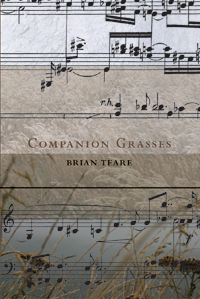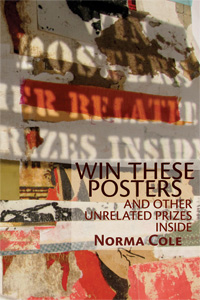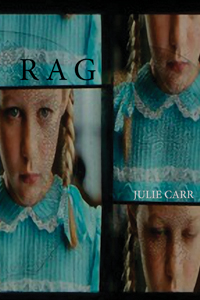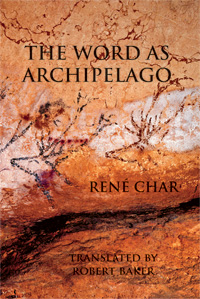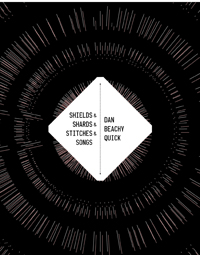Description
What does it mean to dwell in a place? These adventurous poems go on foot in search of answers. Walking the cities, coasts, forests and mountains of Northern California and New England, they immerse themselves in the specifics of bioregion and microclimate, and take special note of the cycle of death and rebirth that plays out dramatically in California’s chaparral and grasslands. Inspired by Transcendentalism, Companion Grasses sees the sacred in the workings of the material world, but its indebtedness to the ecological tradition of California poets like Gary Snyder and Brenda Hillman means that it also unearths such evidence in the sensual materiality of words themselves. Both ecologically rich landscapes and highly rhythmic inscapes, these poems set seasonal and human dramas side-by-side, wresting an original, signature music from the meeting of site and sight. In pursuing an aesthetics situated in place, they compose an ethics of what it means to be a human companion to the natural world: “What we love, how we care for it,/is where we live.”
Finalist, Kingsley Tufts Poetry Award
Finalist, Lambda Literary Award in Gay Poetry
Recommended on Harriet‘s November 2013 Reading List by Tiffany Higgins
One of Slate‘s Best Poetry Books of 2013
One of The Volta‘s Best Books of 2013
One of Verse‘s 2013 Recommended Books
American poetics has never strayed far from a vigilant entwined apprehension, where a meticulous naming or reading of the world’s phenomena becomes an intelligence of the world’s immanent possibilities. From Emerson, Whitman and Dickinson on, the rigors of observation have laid claim to the spirit’s desire to find transcendence in the saturated repository of language. Brian Teare’s “Companion Grasses” is a glorious, daring continuance: “I was making language/a stem to aspire to.”
Ann Lauterbach, author of Or To Begin Again
It is a love poem to California. And it is an elegy to an unnamed woman dead on the stoop, to Teare’s father, to the poet Reginald Shepherd. It is also one of the most beautiful and moving books that I’ve read. Full of seriousness. Full of tradition. And full of care.
Juliana Spahr, author of Well Then There Now
A book of walking. A book of companions. A book of the domestic. Of companionship and loss. Of strenuous movement. Of hiking and looking. Of concerted reading. In 1865, Whitman wrote, “Earth, round, rolling, compact—suns, moons, animals—all these are words, / Watery, vegetable, sauroid advances—beings, premonitions, lispings of the future—these are vast words.” Can I say of Companion Grasses, these are vast words? Like Whitman before him, Brian Teare emulates the power of the earth in these poems, crowning these words with supernal, transcendent lusters.
Peter O’Leary, author of The Phosphorescence of Thought
About the Author
Reviews
Excerpt
Born in 1974 in Athens, Georgia, Brian Teare grew up in Tuscaloosa, Alabama. After first pursuing studies in flute performance and composition, he received a BA in English and creative writing from the University of Alabama and an MFA in creative writing from Indiana University in 2000. His highly acclaimed collections of poetry include The Room Where I Was Born (2003), winner of the Brittingham Prize and the 2004 Thom Gunn Award for Gay Poetry, Sight Map (2009), and Pleasure (2010), winner of the Lambda Literary Award. He is also the author of numerous chapbooks, most recently Paradise Was Typeset, Helplessness, and Black Sun Crown. From 2000-2002, Teare was a Wallace Stegner Fellow in creative writing at Stanford University and has gone on to receive fellowships from the National Endowment of the Arts, the MacDowell Colony, the Marin Headlands Center for the Arts, and the American Antiquarian Society. Anthologized as a critic as well as a poet, his work has appeared in Legitimate Dangers: American Poets of the New Century (2006), At the Barriers: On the Poetry of Thom Gunn (2009), Beauty is a Verb: The New Poetry of Disability (2011), and Jean Valentine: This-World Company (2012). After over a decade of teaching and writing in the San Francisco Bay Area, Teare is now an Assistant Professor at Temple University, and lives in Philadelphia, where he makes books by hand for his micropress, Albion Books.
A brief interview with Brian Teare
(conducted by Rusty Morrison)
How/why did you begin Companion Grasses?
The book began in response to two concurrent experiences: my first attempt to identify grasses and wildflowers with the aid of field guides, and a deep immersion in the central texts of 19th century Transcendentalism. I was moved by the contrast between deep attention to the material world and Emerson’s claims that “The soul circumscribes all things. As I have said, it contradicts all experience. In like manner it abolishes time and space.” The more time I spent classifying grasses, the more their materiality refuted and complicated my understanding of what it means to know the world—I was constantly misidentifying what I saw, and yet my focused attention on them abolished time and space. If the soul is the contradiction in all experience, it’s evidence of the soul at work that I wanted to isolate and tease out in the poems, so the rough drafts were written on foot during long hikes, and revised later, a process that allowed for both immediacy of perception and the meditative space into which the hiker’s mind disappears. Thus Companion Grasses is, in essence, both field guide and autobiography, containing details of place and season as well as the facts of my own life.
Your use of form is quite various in Companion Grasses. How did your choices regarding form in this book allow you to engage with the subjects of these poems?
It’s my hope that the formal range of the poems in this book bears out the experience I have as a working poet—that poetic form responds equally to content, the historical and literary and autobiographical contexts in which a poem is written, and the process of composition itself. As I write in “Tall Flatsedge Notebook”: “I was making language/a stem to aspire to ://durable flexible able/to register shift quickly—//when shaken/to keep shape.” If I’ve kept to my word, the variety of poetic forms in Companion Grasses—from the sonnet to the verse essay—are grounded as much in the possibilities of language as in my own responses to experience. The book was written over five years, from 2005 to 2010, a time during which I became more familiar with the coastline of Northern California, fell in love, and both my father and my friend the poet Reginald Shepherd died. So if Companion Grasses is a philosophical meditation on place, an autobiographical record of the erotic and the elegiac, and, finally, a testament of an ecological consciousness, I hope its forms not only register these shifts in diction and in subject but also my own interior response to these shifts, ecstatic and sorrowing and shaken.
How did you come to choose the title of this book?
I was reading Donna Haraway’s classic essay, “The Companion Species Manifesto,” which is largely about the relationship between dogs and people. But her arguments got me thinking about what exactly might constitute cross-species companionship and what kinds of species are “significant others” in the landscapes through which I spent my time hiking. In the coastal prairies above the Pacific and the meadows of New Hampshire’s White Mountains, I felt my life as one among the many grasses that populate those bioregions—a feeling that even made me more aware of the sparse grass population back on my street in San Francisco. So though my title is a rethinking of Haraway’s, the phrase “companion grasses” is meant to indicate that I’m attempting to see humans as companions to the non-animal, nonhuman species of the natural world—to say that we live and love and die accompanied by grasses.
What, specifically, were some of the most interesting surprises you encountered or most daunting challenges you faced as you worked through the writing of the poems in this book? Did you change as a writer, or did what you were seeking from writing change?
The longer I worked on this book, the longer the poems seemed to get, and the more they challenged the line between the compression of the poem and the expansion of the essay—this was a definite change in my work. In some ways, I think I was trying to work out the difference between a serial poem in discrete lyric sections—a poem like “Transcendental Grammar Crown”—and a proper long poem, something that flows on and on largely unbroken. In other ways, I think I was trying to renegotiate the balance between wanting to sing and wanting to think, wanting to tell a story and wanting to show an image. I knew I needed to write something long in order to be able to balance so many desires, but I wasn’t sure I could do it. It wasn’t until after reading A.R. Ammons’ great long poem “Garbage” that I realized I might have to let my language get more loose, more prosy, in order to generate enough verbal energy to sustain a longer poem. And though it went against a lot of my instincts as a poet, “To begin with desire” allowed me to relax somewhat into a more discursive, more talky voice that could include research and quotation as well as song, argument, story and image—even including, finally, a lament for my father. Writing that poem seemed to finish the book, and then the writing of “Star Thistle” surprised me—not only did it build upon the rhythms and form of “To begin with desire,” but it also added a second elegy to a book I had thought of as more celebratory than sorrowing.
With which contemporary writers might your readers associate these poems?
I see Companion Grasses as speaking to readers familiar with poets as various as Gary Snyder, Brenda Hillman, Juliana Spahr, and Dan Beachy-Quick, or prose writers like Annie Dillard, Terry Tempest Williams, or Rebecca Solnit.
You chose the images that are the elements used in the cover design for this book. And, you were very involved in the design decisions. Can you speak to this process, and your intentions for the cover?
In one of my previous lives, I studied letterpress printing and hand bookbinding at the San Francisco Center for the Book, and I still run a micropress out of my house, so I’m involved with issues of design on a practical and theoretical level. Because a book is a holistic form, united from title down to font, the cover of Companion Grasses uses two elements borrowed from the poems: the opening page of Charles Ives’ Concord Sonata, and photographs from a hike at Chimney Rock, Point Reyes National Seashore. The Ives Sonata is central to “To begin with desire,” and Chimney Rock is the setting for much of “Tall Flatsedge Notebook”—I took the photos in July because I especially wanted the colors of Northern California’s summer, that mix of gold, silver, blue and green. Cassandra Smith, the book’s designer, did a beautiful job of improving upon my crude mock-up—in her design, collage pays homage to Ives’ compositional method, which involves a lot of quotation and appropriation, overlay and splicing, a plenitudinous simultaneity. Though I don’t expect any of this inter-textual play to be legible to the reader right away, I do believe the right cover can convey the poems to the reader in an immediate and visceral way—a subconscious understanding that becomes more conscious after the reader opens the book and begins reading.
Would you tell me a bit about yourself?
I was born in 1974 in Athens, Georgia, and grew up in Tuscaloosa, Alabama. After first pursuing studies in flute performance and composition, I received a BA in English and creative writing from the University of Alabama and an MFA in creative writing from Indiana University in 2000. On a Stegner Fellowship from Stanford University I moved to the San Francisco Bay Area, where I remained, teaching and writing and hiking, for over a decade. Now an Assistant Professor at Temple University, I live in Philadelphia, where I make books by hand for my micropress, Albion Books.
Here, the influences of ecology, philosophy, love, and loss most clearly coalesce. As he writes in the exquisite “To begin with desire,” an elegy for Teare’s father, “So much of our seeing/ lies in forgetting the laws// of the fathers, the ones/ we were given, & the ones// we choose, as though we look// always at landscape first/ through their eyes.”
Here in his fourth book, Teare (whom I’ve edited but never met) has made, among other things, an elegy in the key of attention, one that marks the importance of our loss by working hard to see what remains—which in this case means both the pastoral environment and the traditions through which we encounter it. It’s no surprise that he does it so well. His last book, Pleasure, was an astonishing attempt, in the wake of his partner’s death from AIDS, to make sense and strangeness out of the ways we elegize. Two deaths spur this new book’s closing—those of his father and his friend the poet Reginald Shepherd—and it’s hard not to feel the loss of his previous partner shadowing another long poem, this one about new love.
Teare’s airy, scarcely punctuated lines have been perforated to let landscape into them, to let world brush up against word. The word “grammar” appears in this poem and elsewhere in the book, most strikingly in the volume’s central 15-section poem “Transcendental Grammar Crown,” communicating the poet’s longing for what Thoreau called a “tawny grammar” equal to the knowledge with which wild places are replete.
This is a book vast with Prairies—of Air, yes, but also of scrub, invasive weeds, wildflowers, and ocean, the prairies of Northern California. Like “My period had come for Prayer—,” Companion Grasses enacts a devotional journey—recalling the long poetic tradition of wandering and versifying in the wild—that leads from the poet-speaker’s expectations of the sublime to transcendental failure: in the face of divine absence, creation unutterably stops.
This is a text in pursuit of its own ground, the framework of language and poetics that constitutes it, while simultaneously striving to imagine a poetics to come, one perhaps free from the totalizing and imperializing structures of what experimental poetics (and eco-poetics in particular) have come to locate in conventional means of placing a poet in relation to their space.
In Brian Teare’s fourth full-length poetry collection, Companion Grasses, creatures, creations, and concepts, in relationship with humans, are recalled, sensualized, parsed, and praised for being adjacent, next to, up against, and flush. Teare’s speaker is beside himself, if “himself” means fragmenting a whole into parts and reconfiguring again into myriad patterns, and if the whole is dynamic, contextual, and song. This, while being perhaps a definition for poetry or a life is, also, an ambitious project: that of calling for, and moving toward, a notion of ecology.
…in Teare’s short stanzas there is a sense of mobility and thus connection across different sites. Identified in marginal notations these are a nature preserve [Chimney Rock, /Point Reyes /National Seashore], a city residence [59 Albion St., San Francisco], and a variety of texts [philosophy, poetry, plant field guide]. The blank spaces serve to bridge disparate contexts and observations (“a bridge is where we are / there’s no apart,” the poem ends). Intimate inter- and extra- personal lyric subjectivities are animated in the movement from site to site.
The going isn’t always easy. In fact, Companion Grasses is rife with doubts and even exasperation about language. As a lyric postmodernist, Teare circles back to that moment, contemplated by so many precursors all the way back to Emerson, when the individual yearns for and devises a language to communicate the experience of dissolution into a refreshed mode of seeing and saying. Rich with observation and citation, Companion Grasses is an homage as well as a path of discovery.
Teare, in his wanderings through the landscape, is bringing back to us a record of how nature is not inherently good or bad, pure or corrupt, but an ongoing dialogue dictated by our human way of grasping reality and meaning: eternally crossing back and forth between the internal and the external, teeter-tottering between the boundary of idea and reality.
The “field guide” of Teare’s Companion Grasses is composed in a meditative, human language, one that deeply explores large ideas, specific geographies of California, and just what kind of effect writing, living and simply being in the world can have.
Teare’s project is both refreshing for its earned jadedness and companionable because it seems to be poetry that has recovered from the blood thirst for irony. Teare is earnest, but not in the doe-eyed sense. He has problems, structurally and philosophically, but he’s trying to work them out on the page gesturing towards vulnerability. His lines are raw, bewildered and bleeding and yet point at times to the unsentimentally hopeful.
In Companion Grasses we walk with a sensitive, intelligent guide through a series of personally transformative landscapes.
This new millennium poetry emerges within a monumental movement, a wave, rippling across politics, poetics, and ecology. Evolution when one is living in it may be difficult, if not impossible, to observe. Teare’s poetry bridges this imperceptivity between past, current, and future aspects of literary ecologies paying deep homage to poetry’s aural origins. Teare’s poems are sculpted in a beautiful accordance of shape and sound, a convergence of musical space, the sky stretching its banner wide.
To my mind, the more successful aspects of this collection is Teare’s turn toward the elegiac. His poem “Atlas Peak” which alludes to the death of his father and then his beautifully rendered “Star Thistle” which is written for the poet Reginald Shepherd (April 10, 1963 – September 10, 2008) are lyric masterpieces in their own right, finding just the right balance in tone.
These poems present a muscular lineation that echoes Duncan-Olson-and-later-Synder innovations, with a focus on leading the reader through by breath, through their appearance on the page like a musical score. And yet something in Teare remains capacious, lush, almost nineteenth-century in his will to catalogue with an almost desperate specificity the very vastness of being and experience…
Companion Grasses is driven not only by the intersection of systems, but by a particular attention to a fragmenting and swiftly-changing arrangement of language. Teare’s deft metaphor for this use of grammar in “Little Errand” is the quiver: ever-present and skillfully employed at precisely the right moment to bridge the impossible physicality of a moment. At once, this experience is both unbearable and fleeting; each line’s touch is both precise and imbued with gravity as Teare arranges his artfully-placed words alongside a gallery of quotes. Taxonomies, jokes, and poetic theory are sometimes given citation, but also simply part of the shifting landscape. As Teare writes, “context is terrible weight.” Yet in the midst of the ruin, he draws us back again and again to what is left: beauty, stems, desire, sight, the fragile structures that survive through flexibility and mutation.
little errand
I gather the rain
in both noun
& verb. The way
the river banks
its flood, floods
its banks, quiver’s
grammar I carry
noiseless, easy
over my shoulder.
To aim is—I think
of his mouth.
Wet ripe apple’s
scent : sugar,
leather. To aim
is a shaft tipped
with adamant. Angle,
grasp, aim is a way
to hope to take
what’s struck in hand,
mouth. At the river
flood so lately laid
down damage by,
geese sleep, heads
turned under wings
wind tests tremor
in like archery’s
physics shifts
energy, potential
to kinetic : flight—
but not yet :
this grammar’s time
to string a bow, draw
taut the air, send rain
from quiver to verb
to aim to pierce
the scent of such red
flesh. Hope’s arrow’s
anatomy : thin,
feather’s fletching
trembling, it
crests to end
in brightness.

